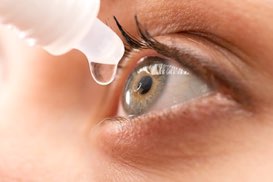What is a Stye (a.k.a. Sty or Hordeolum)?
A stye is a red, tender bump on your eyelid caused by an infection in one of the glands in your eyelid known as meibomian glands. A stye is sometimes accompanied by swelling of your eyelid.
What is a Chalazion (plural: chalazia)?
A chalazion is also a bump on your eyelid. It is the more chronic form of a stye, also having developed when one of the glands in your eyelid, known as meibomian glands, became clogged and infected.
What is the Difference Between a Stye and a Chalazion?
They are both bumps involving your eyelid.
A stye is often tender, or painful, and is caused by an infection; it can progress to involve and inflame the entire eyelid which is known as cellulitis.
A chalazion is usually not red or painful, but can be large enough to distort your eyelid, even placing enough pressure on the surface of your eye to result in blurry vision. Less commonly, it can become red, swollen and tender.
What Causes a Stye or a Chalazion?
The most common cause of a stye or a chalazion is the clogging, and secondary infection, of one of the glands in your eyelid known as meibomian glands. The most common bacteria involved is Staphylococcus.
Symptoms of a Stye or Chalazion:
Signs and symptoms of a stye and chalazion include:
- A bump on your eyelid (similar to a pimple). It may be red and inflamed
- Eyelid pain and tenderness
- Eyelid swelling
- Crustiness along your eyelid margin, with “dandruff” in your eyelashes
Who is at Risk of Developing Styes and Chalazia?
Anyone can develop a stye or a chalazion, but people who have the following are at greater risk:
- Blepharitis
- Ocular rosacea and/or rosacea of your face
- Meibomian gland dysfunction
- Seborrheic dermatitis (patches of scaly, red skin, mainly on the scalp)
- People with diabetes, or other chronic medical problems
- People experiencing hormonal changes
- People with Demodex
- People experiencing stress
- People who have had a stye or a chalazion before
- People who wear eyelash extensions or fake/false eyelashes
- People with a history of acne, with or without Accutane treatment
How are Styes and Chalazia Diagnosed?
The diagnosis of both styes and chalazia are made by taking a thorough medical history, listening to your symptoms and examining your eyes with a biomicroscope (slit lamp). Special attention is paid to evaluating your eyelids, eyelid margins, eyelashes, and Meibomian gland orifices (openings). Gentle digital pressure is applied to your eyelids to assess the quality and quantity of the oils secreted by your meibomian glands which reflects the functioning of your Meibomian glands.
The gold standard to directly evaluate your meibomian glands structurally and anatomically is to image them using advanced technology known as LipiScan. LipiScan is a meibographer which captures images of your meibomian glands. Using this state-of-the-art technology your meibomian glands can be viewed to assess and quantify them structurally.
When you have either functional or structural issues with your meibomian glands this is known as meibomian gland dysfunction, or MGD. Blepharitis, meibomian gland dysfunction, and ocular rosacea are extremely closely related conditions which, to a large extent, have the same treatment protocols.
What is the Treatment for Styes and Chalazia?
Education: Dr. Muller and her staff place a huge emphasis on education. They spend a lot of time explaining your diagnosis, treatment options, and what you can do to have the healthiest, most comfortable eyes and eyelids, and maintain your best vision, always.
Eyelid hygiene: Twice each day, in the morning and in the evening, you should apply warmth to your closed eyes for 20 minutes. This application of heat serves to loosen, or soften, the contents of your meibomian glands. Warmth is best applied using the Wizard Research Electric Heated Dry Eye Mask. Gel packs, heat masks (Optase, Bruder, other) which are heated in a microwave, and washcloths, are not as effective or convenient.
-
-
- The application of warmth should be followed immediately by washing your eyelids, also referred to as eyelid hygiene. Washing your eyelids immediately following the application of heat will wash away the contents of your meibomian glands which you have loosened or softened, wash away the bacteria that tends to gather at the base of your eyelashes and eyelids, and mechanically milk, or massage, your glands helping to keep their contents flowing. Eyelid hygiene is best accomplished by closing your eyes and using gentle soap and water to “shampoo” your eyelashes/eyelids for a full minute (which is a very long time with your eyes closed). You can simply use your face soap or bar soap. If you prefer to use a towelette, Optase is Dr. Muller's favorite.
- While in our office Dr. Muller and her staff will teach you how to perform eyelid hygiene optimally. Eyelid Hygiene
- EYELID CLEANSING IS ANALOGOUS TO BRUSHING YOUR TEETH. Most of us know that brushing our teeth prevents the accumulation of plaque, and the development of cavities and gum disease. Another part of your daily hygiene should be taking the time to clean your eyelids and eyelashes. Cleaning your eyelids removes debris that can build up over time causing obstruction and loss of your meibomian glands, known as meibomian gland dysfunction (MGD). Prevention of MGD using early detection and intervention is essential to the long-term health and comfort of your eyes.
-
Prescription medications: Dr. Muller may prescribe antibiotics in the form of eye drops, ointment and/or tablets by mouth depending upon the extent of your infection.
In Office Procedure/Drainage: If your stye or chalazion does not resolve using warmth and antibiotics, Dr. Muller may recommend drainage. This is easily performed in the office; it is not painful as Dr. Muller anesthetizes the area using local anesthetics.
Note: Please do not try to pop or squeeze a stye or chalazion yourself as this can cause the infection to spread throughout your eyelid.








